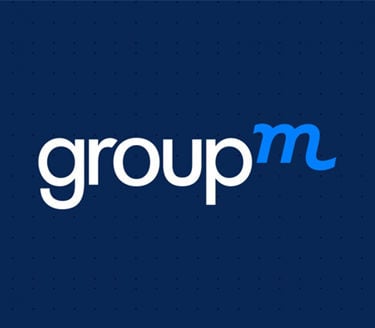By The Numbers: Urban Contemporary's Top Performers 'Can't Stop Won't Stop.'

Story by Inside Radio
Whether referred to as R&B, soul or, urban contemporary, the radio format has a long history, dating back to the 1940s and early believers like the legendary WDIA Memphis. The Memphis market is clearly still a leader in the format, as it's the only one with two of Nielsen's top ten urban contemporary stations based on persons 18-34 average-quarter-hour share, Monday-Friday 6am-7pm, in PPM markets during the spring 2022 measurement period.
A closer look at the audience composition of those and Nielsen's other eight listed stations – which follows in the latest in the exclusive-to-Inside-Radio “Top Performers” series of By The Numbers – shows that, to quote one of the format's biggest current hits, the urban contemporary format “Can't Stop Won't Stop.” In fact, in terms of share growth across all key demos since 2021, it's been one of the hottest radio formats of 2022.
iHeartMedia claims half of the stations in Nielsen's top 10, including the top two: “K97.1” WHRK, one of Memphis' two, and “101.1 The Beat” WUBT Nashville. That's two of the four which deliver double-digit shares in persons 18-34, the other two are Beasley Media Group's “Power 98” WPEG Charlotte, and one of Urban One's two listed stations, “92Q Jams” WERQ Baltimore.
Aside from Memphis, which is also served by Flinn Broadcasting's “Hot 107.1” KXHT, there's direct competition for urban contemporary leaders in four other listed markets, making their top-10 ranking all the more impressive. In Miami, Cox Media Group's “99 Jamz” WEDR does battle with iHeart's “103.5 The Beat” WMIB, iHeart's WJLB is up against independently-owned “Hot 107.5” WGPR in Detroit, and iHeart and Urban One urban contemporary stations compete in both Philadelphia and Cleveland: iHeart's “Power 99” WUSL goes head-to-head with Urban One's “100.3 R&B” WRNB in the former, while Urban One's “Z107.9” WENZ battles it out with iHeart's “Real 106.1” WAKS-HD2 in the latter.
Among persons 18-34, although it's a nearly even split between male and female listening to these 10 stations, based on an average of their audience composition – with females taking a slightly higher share at 51.6% – only two stations closely match that balance, while the rest are significantly more male or female. Women 18-34 account for between 57.3% and 72.4% at WUBT, WUSL and both Memphis stations, while WEDR, WPEG, WERQ and WENZ lean more toward men 18-34.
Overall, the 18-34 segment accounts for 35.8% of listening to the top 10 stations on average, with WPEG's profile notably higher (43.4%) and KXHT's lower (28.8%). In the latter station's case, it boasts a higher-than-average Persons 6-17 audience – 21.2%, vs. the 15.2% average – which is also true for WENZ (22.9%). In persons 25-54, where PPM share has grown in 2022 and which represents a 57.0% average cut of total audience for these stations, fifth-ranked iHeart “104.5 The Beat” WTKS-HD2 (67.0%), WHRK (65.3%) and WUBT (61.7%) all display a higher older skew.
Station loyalty is always a major driver in any station's and format's success, and the share of core demo listeners calling either of two of these urban contemporary stations their P1 is among the highest seen to date in this series of analyses. On average, seven in ten (69.2%) 18-34 listeners say one of these ten is their preferred station, which moves to nearly nine in ten for WPEG (89.1%) and WUBT (88.8%). WPEG also pulls a higher number of average daily, and daily P1, listening occasions, with 5.1 and 5.9 respectively, vs. the 10-station averages of 3.9 and 4.5.
Three-fourths (75.4%) of 18-34s listen to these stations away from home, on average, with that number significantly higher for half of these stations, most notably WEDR, WERQ and WTKS-HD2, where out-of-home listening's share is in the 86-87% range. Two of these stations, WPEG and WENZ, deliver a much higher share of at-home listeners, with 48.4% and 41.3% vs. the 10-station 24.6% average.
Given urban contemporary's younger age skew, full-time workers account for a lower percentage of listeners on average, with just over half (51.9%) in that category. Nonetheless, there are three stations – WUBT, WHRK and WUSL – with a share of full-time-employed listeners in the 60-70% range. Part-timers show up more prominently at WTKS-HD2 and WENZ, with the latter's 30.1% nearly doubling the 10-station average. Those in the “other” category, which includes college or not employed, make up a larger share of audience compared to the 33.2% average, nearly half, at KXHT and WPEG.
In Memphis, where African-Americans represent nearly half of the population (47.4%), they account for 95% of the listeners at both urban contemporary stations, the highest shares among these 10. On the other end is Baltimore's WERQ, 51.9% of whose listeners are Black while 43.4% fall in the “other” (as in neither Black nor Hispanic) category. Hispanics show up most prominently at Orlando's WTKS-HD2, with 26.7% in a market where their share of the population is 35.4%. – Rich Appel

